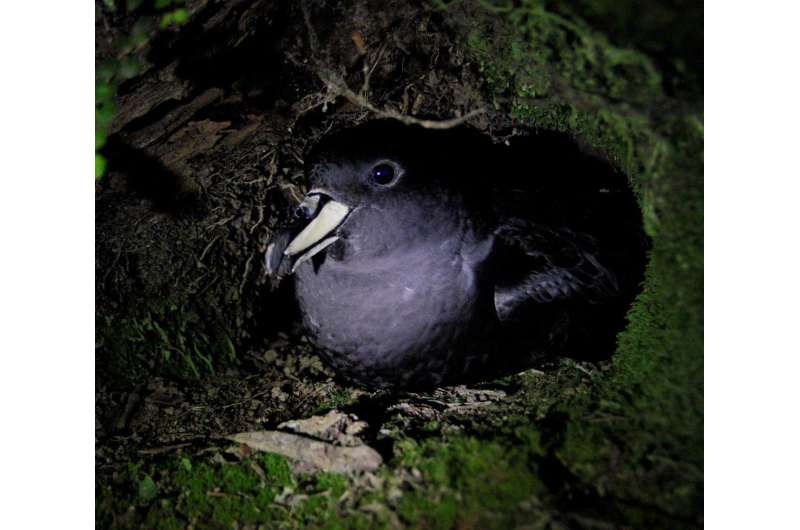Endangered petrels and trawl fishing clash in Tasman sea

Today's shifting environmental conditions are creating an uncertain future for many top predators in marine ecosystems, but to protect the key habitat of a species, you first have to know where that habitat is and what threats might be affecting it. A new study from The Condor: Ornithological Applications looks at where New Zealand's endangered Westland Petrel forages during its breeding season and shows that its range overlaps more with trawl fishing activity than conservationists realized.
The Museum of New Zealand Te Papa Tongarewa's Susan Waugh and her colleagues outfitted 73 petrels with GPS loggers over the course of four breeding seasons to track where they went during their foraging trips in the Tasman Sea. The results show that the birds' core feeding areas were consistent from year to year, located within 250 kilometers of their breeding colonies and focused on highly productive areas where the seafloor is steeply sloped. These sites often overlap with areas of significant trawl fishing activity, and further data is needed to see whether this co-occurrence translates into bird mortality. The species is the tenth most at-risk species from the impacts of New Zealand commercial fishing, but it appears that its actual ranking may be even higher as a result of the finding that the species is exposed to more fisheries activity than was previously understood.
"Our work on Westland petrels started in 2010, with a desire to understand how this species was faring demographically, as well as the key influences on it," says Waugh. "Our work highlights a key factor in the birds' ecology that has strong implications for conservation—these birds predictably use the same waters year in and year out, regardless of El Niño cycles, and they are therefore a great candidate for a marine protected area to create protection of their trophic relationships. We feel this Westland Petrel foraging data will provide a high-quality information source to help define key areas for marine conservation that will also provide protection for a whole suite of species."
"A remarkable and important aspect of this study is that they performed this investigation during a six-year period, encompassing a variety of environmental conditions. Whatever the sex or the breeding stage considered, Westland Petrels consistently foraged in the same core areas from year to year," adds Christophe Barbraud of the French National Centre for Scientific Research, a seabird conservation expert who was not involved in the study. "Since these areas were also consistently and heavily used by trawl fisheries, these results call for the implementation of marine spatial management tools, such as marine reserves or restrictions and monitoring of interactions between individual Westland Petrels and trawl fisheries, to ensure the conservation of this endangered petrel species."
More information: Susan M. Waugh et al, Environmental factors and fisheries influence the foraging patterns of a subtropical seabird, the Westland Petrel (Procellaria westlandica), in the Tasman Sea, The Condor (2018). DOI: 10.1650/CONDOR-17-179.1
Provided by American Ornithological Society




















